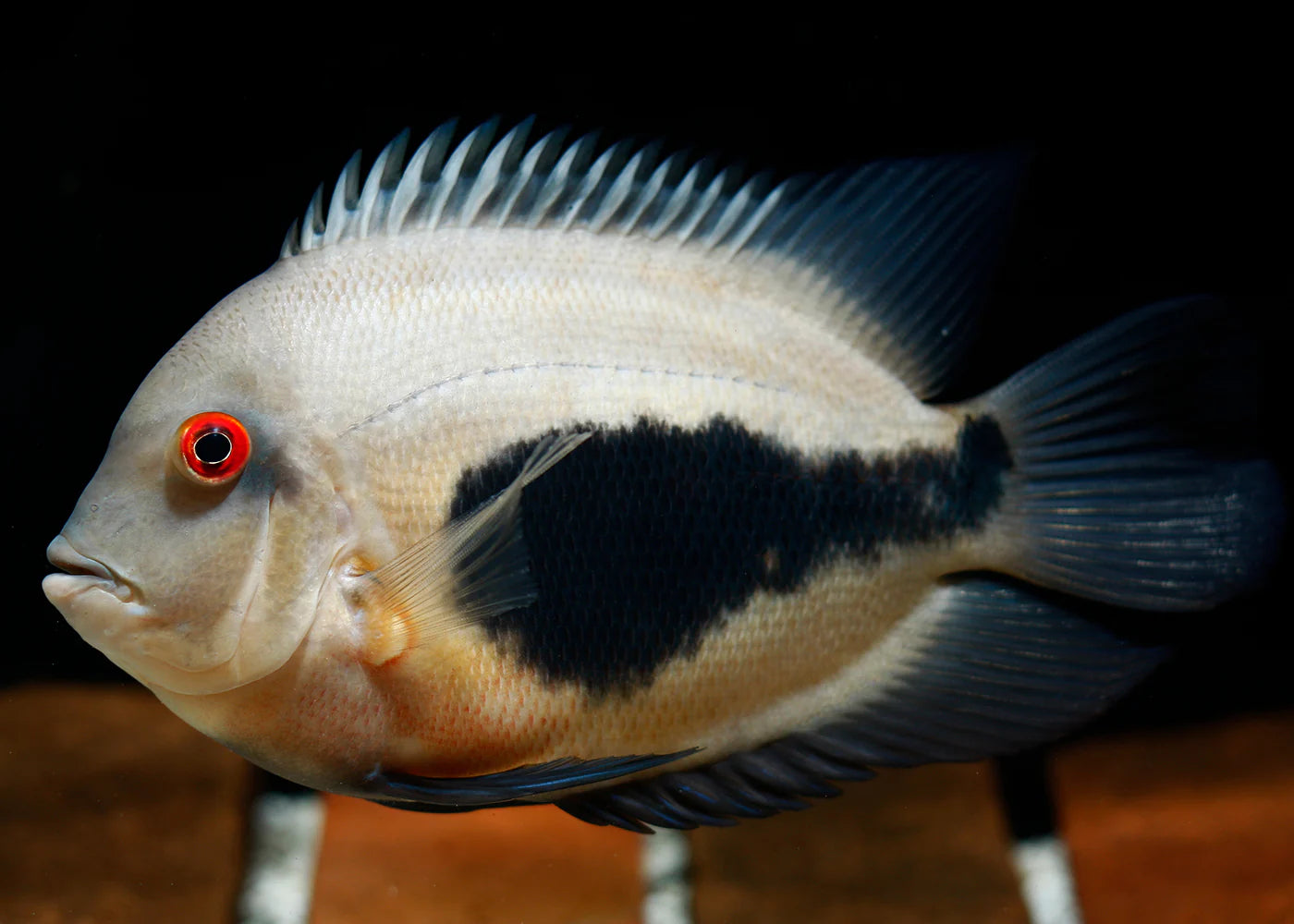1
/
of
1
DANAQUA
Uaru cichlid (triangle cichlid)
Uaru cichlid (triangle cichlid)
Regular price
$29.99
Regular price
$39.99
Sale price
$29.99
Shipping calculated at checkout.
Quantity
Couldn't load pickup availability
The Uaru cichlid, or "triangle cichlid," is a large, peaceful South American cichlid known for its distinctive oval body shape and a prominent black splotch on its side, which becomes more pronounced with age. Juveniles are mottled, but adults develop a tan or bronze coloration. They grow to 8-12 inches, have a semi-herbivorous diet rich in plant matter, and are social fish that form pairs and care for their young.
Appearance & Size
- Body Shape:Uarus have a unique, tall, and flattened body, resembling a disc.
- Coloration:Juvenile Uaru are mottled with brown and black, while adults mature to a tan or bronze color with a prominent, almost tear-shaped black spot on their mid-section.
- Size:They are a moderately large cichlid, reaching adult lengths of 8-10 inches (20-25 cm), with some sources noting up to 10-12 inches (25-30 cm).
- Fins:Fins are generally transparent with a hint of reddish or orange, particularly in males.
Behavior & Temperament
- Peaceful Nature:Uarus are considered a gentle giant cichlid. They are generally non-aggressive and can even be kept with smaller tetras and other peaceful cichlids.
- Social:They are intelligent and social fish that thrive in small schools or groups.
- Breeding:Pairs form strong bonds and are excellent parents, fanning their eggs and feeding their fry on their parent's slime coat.
Diet
- Herbivorous Tendencies:Uarus are omnivores with a strong preference for plant-based foods, requiring a diet rich in vegetables.
- Food Sources:They readily consume brine shrimp, fish flakes, fresh vegetables (like zucchini, peppers, cucumbers), lettuce, and spirulina-based foods.
Aquarium Care
- Tank Size:A minimum of a 70-gallon aquarium is recommended, as they need ample space to swim.
- Tank Setup:Provide hiding spots with driftwood, rocky formations, or clay pots.
- Water Parameters:They prefer warm, soft, and acidic water conditions, but can adapt to a variety of conditions if acclimated slowly.
Share



